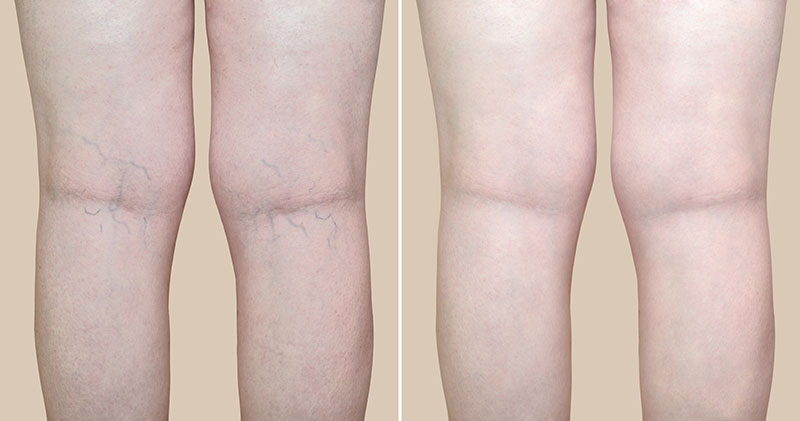What are they?
Spider veins are purple, red or blue veins present most often on the legs, face and hands. The veins are very thin and narrow and branch out like a spider’s web or branches on a tree. More than half of all women in the United States experience spider veins.
Causes
- Standing on your feet for long periods of time
- Family history of spider veins (hereditary)
- Taking the oral contraceptive pill
- Hormone replacement therapy
- Some potent steroid creams
- Pregnancy
- Obesity
- Aging
Symptoms
For some patients, the only impact of spider veins are their appearance; blue or purple veins under the surface of the skin. For other patients, the symptoms are beyond cosmetic – especially over time and more painful at the end of the day.
The most common symptoms include:
- Cosmetic discoloration or raised skin
- Rash or itchiness around the veins (eczema)
- Aching pain or heaviness in the legs, especially when standing and walking
- Night cramps (legs)
- Tired legs
- Restless legs
- Swelling of the legs, ankles and feet
- Burning of the skin around the veins
- Ulcers, clotting or bleeding (less common symptoms)
Treatment Options
Spider veins can be treated in-office with a minimally invasive procedure. Most patients agree that the procedure is virtually painless and requires little or no downtime.
Procedures:
- Sclerotherapy – injecting a foamy compound to block the vein
- Laser Ablation – utilizing direct light energy to seal off the vein
- Radiofrequency Ablation – utilizing indirect heat energy to seal off the vein
- Surgery – removing the vein through small incisions (less common)
- Compression – providing gentle pressure to stop or slow blood flow
Before & After



